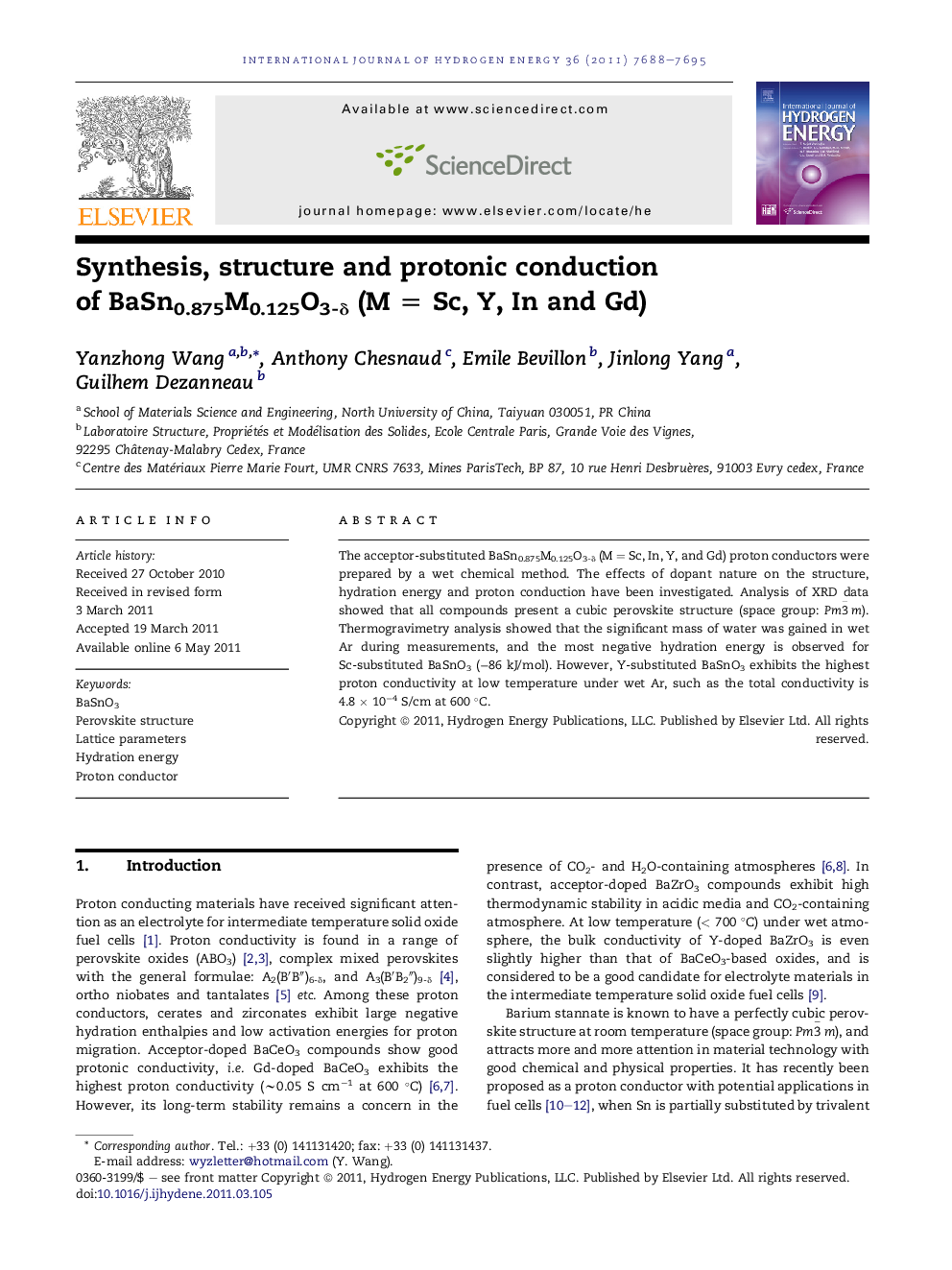| Article ID | Journal | Published Year | Pages | File Type |
|---|---|---|---|---|
| 1279298 | International Journal of Hydrogen Energy | 2011 | 8 Pages |
The acceptor-substituted BaSn0.875M0.125O3-δ (M = Sc, In, Y, and Gd) proton conductors were prepared by a wet chemical method. The effects of dopant nature on the structure, hydration energy and proton conduction have been investigated. Analysis of XRD data showed that all compounds present a cubic perovskite structure (space group: Pm3−m). Thermogravimetry analysis showed that the significant mass of water was gained in wet Ar during measurements, and the most negative hydration energy is observed for Sc-substituted BaSnO3 (−86 kJ/mol). However, Y-substituted BaSnO3 exhibits the highest proton conductivity at low temperature under wet Ar, such as the total conductivity is 4.8 × 10−4 S/cm at 600 °C.
Highlight► BaSn0.875M0.125O3-δ (M = Sc, In, Y and Gd) compounds have been prepared by a polymerisation route, which present all a cubic pervoskite structure. ► These compounds uptake water under a temperature of 600 °C. ► As a consequence, high proton conductivity is seen below this temperature, the highest value being observed for Y and In-doped compounds. ► On the opposite, the high negative hydration enthalpy observed for Sc-doped BaSnO3 results in limited proton conduction, probably due to its trapping close to Sc ions.
